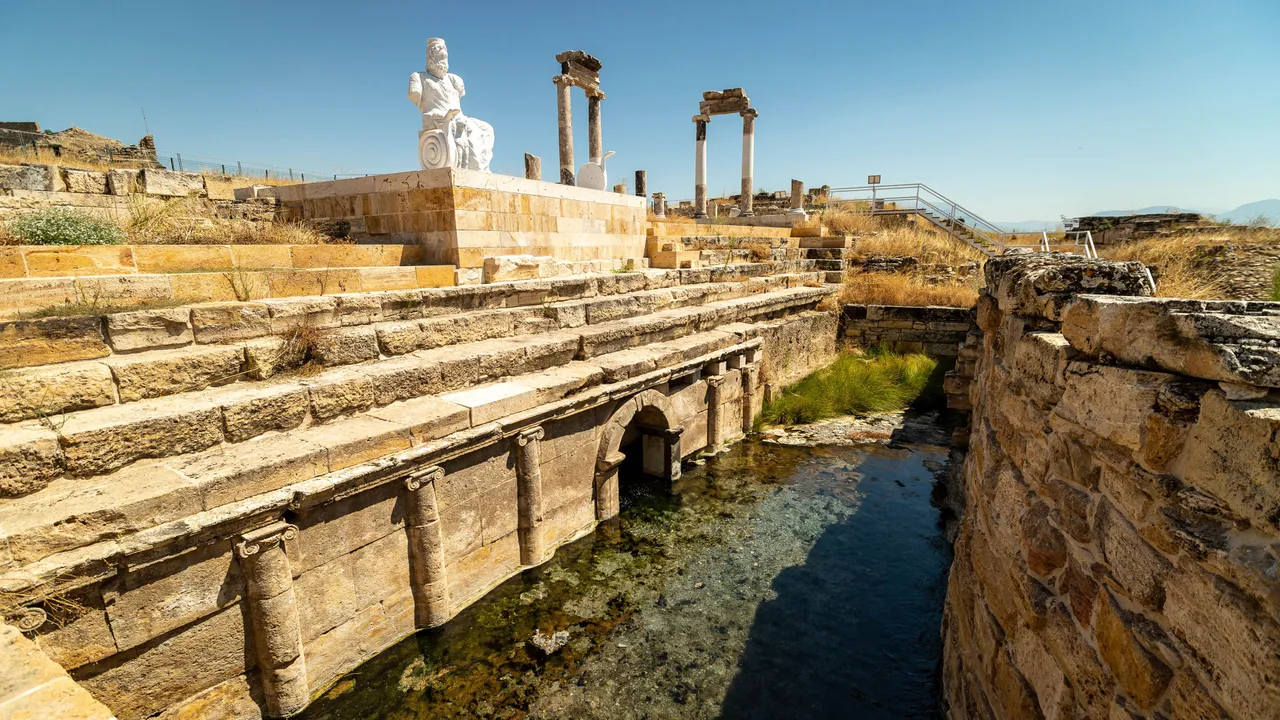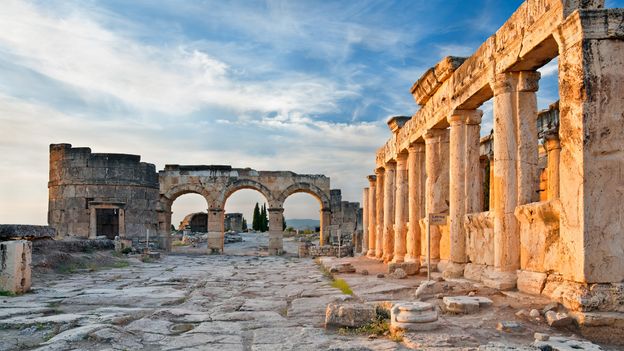The ancient city of Hierapolis has long hidden a poisonous secret in its mysterious "Gate to Hell". But modern science has finally uncovered the truth behind the Roman myths.
"The thermal waters are likely one of the primary reasons for the city's foundation," said Dr Sarah Yeomans, an archaeologist at the University of Southern California who specialises in the Roman Empire. "By the mid-2nd Century, Hierapolis would have been a beautiful, bustling spa-town with what I imagine was a more dynamic and diverse population than most, given the popularity of such places with visitors."
But Hierapolis was also known throughout the Roman world for another, more sinister reason. It was said to be the location of a "Gate to Hell", a portal to the underworld where the toxic breath of the three-headed hellhound Cerberus flowed out of the ground, claiming unsuspecting victims on behalf of his master, the god Pluto. A shrine – the Ploutonion – was built on the site, and pilgrims travelled from across the region to pay the priests of the temple to make sacrifices to Pluto on their behalf.
Writers of the time, including Pliny the Elder and the Greek geographer Strabo, described these sacrifices as a chilling spectacle. A priest would lead an animal, perhaps a sheep or a bull, into the shrine. As if by the hand of the god, the animal would instantly drop dead, while the priest would walk out alive. "I threw in sparrows, and they immediately breathed their last and fell," wrote Strabo in Book 13 of his encyclopaedia Geography, clearly astonished by what he had just witnessed.


 www.bbc.com
www.bbc.com
"The thermal waters are likely one of the primary reasons for the city's foundation," said Dr Sarah Yeomans, an archaeologist at the University of Southern California who specialises in the Roman Empire. "By the mid-2nd Century, Hierapolis would have been a beautiful, bustling spa-town with what I imagine was a more dynamic and diverse population than most, given the popularity of such places with visitors."
But Hierapolis was also known throughout the Roman world for another, more sinister reason. It was said to be the location of a "Gate to Hell", a portal to the underworld where the toxic breath of the three-headed hellhound Cerberus flowed out of the ground, claiming unsuspecting victims on behalf of his master, the god Pluto. A shrine – the Ploutonion – was built on the site, and pilgrims travelled from across the region to pay the priests of the temple to make sacrifices to Pluto on their behalf.
Writers of the time, including Pliny the Elder and the Greek geographer Strabo, described these sacrifices as a chilling spectacle. A priest would lead an animal, perhaps a sheep or a bull, into the shrine. As if by the hand of the god, the animal would instantly drop dead, while the priest would walk out alive. "I threw in sparrows, and they immediately breathed their last and fell," wrote Strabo in Book 13 of his encyclopaedia Geography, clearly astonished by what he had just witnessed.


Turkey's mysterious 'portal to the underworld'
The ancient city of Hierapolis has long hidden a poisonous secret in its mysterious "Gate to Hell". But modern science has finally uncovered the truth behind the Roman myths.
